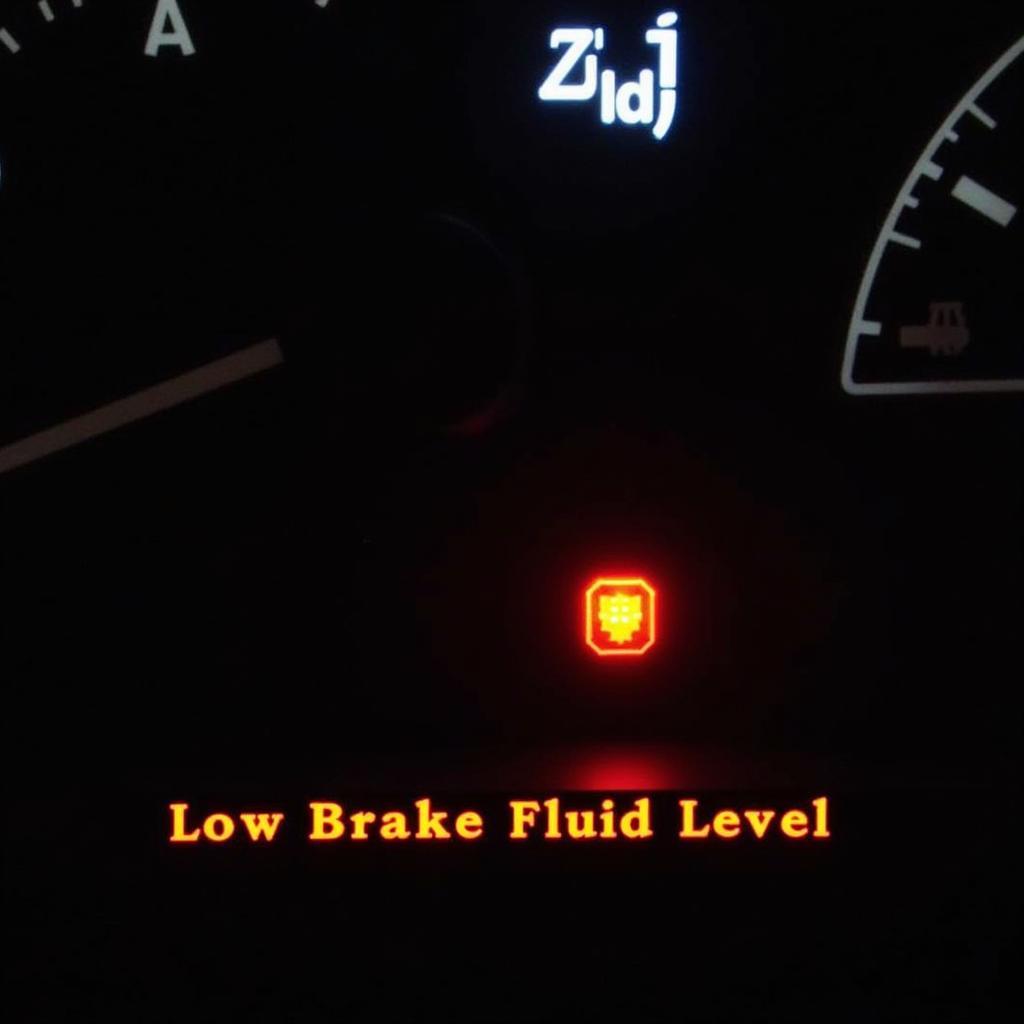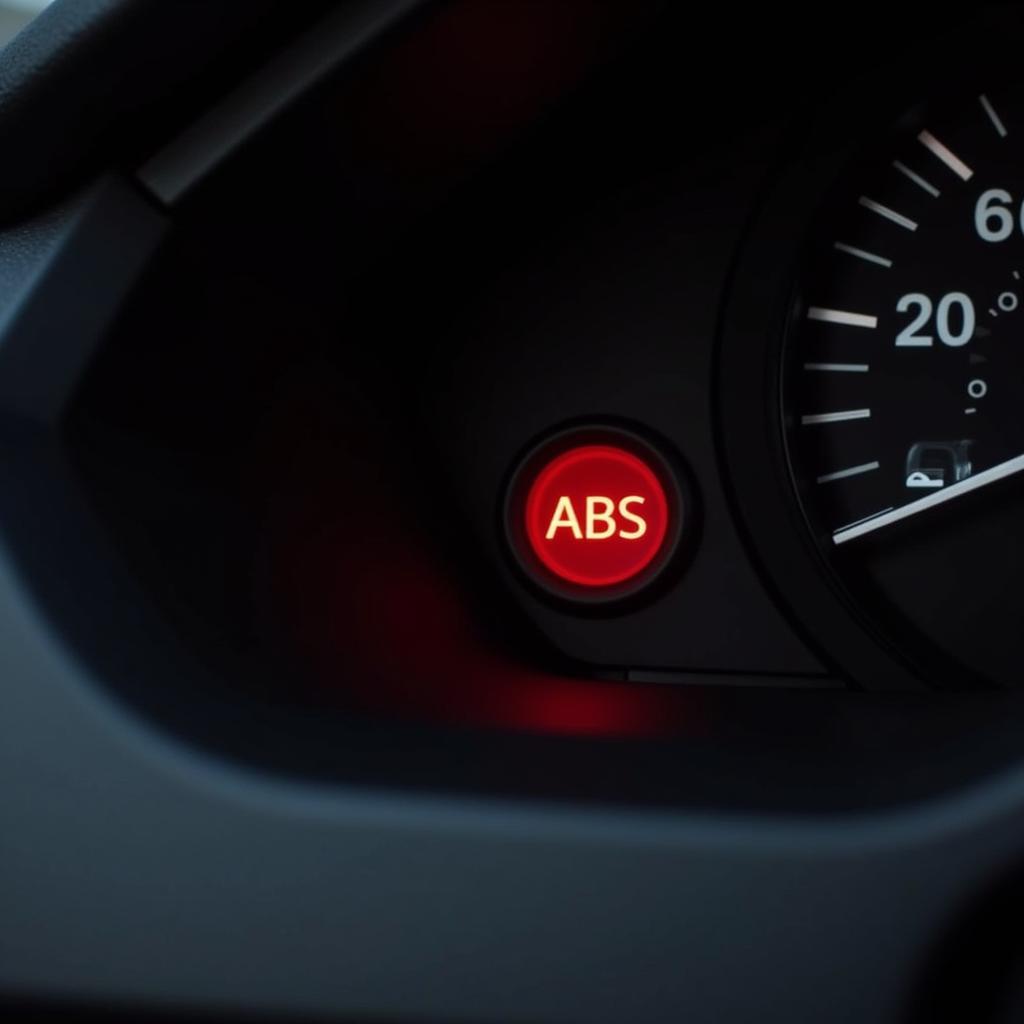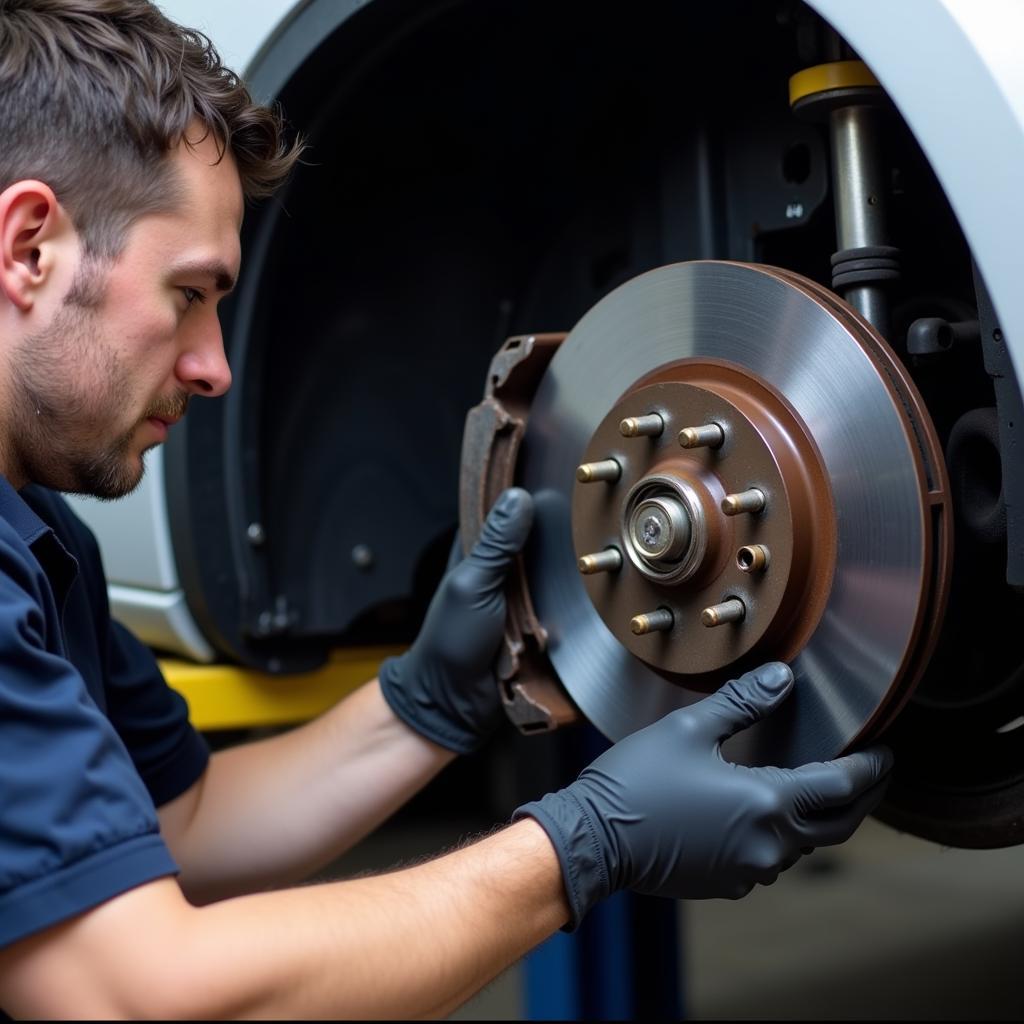The brake warning light is one of the most important symbols on your car’s dashboard. It’s designed to alert you to potential problems with your braking system, which could put you and others at risk. While it typically illuminates when your parking brake is engaged, seeing it lit up while driving can be alarming. This article aims to help you understand the different reasons your brake warning light might be on, and what to do about it.
Common Reasons for a Brake Warning Light
There are several reasons why your brake warning light might come on while driving. Here are some of the most common culprits:
Low Brake Fluid Level
One of the most common and straightforward reasons for the brake warning light is low brake fluid. Your car’s braking system relies on hydraulic pressure to function correctly, and brake fluid is the lifeblood of this system.
 Car with low brake fluid level warning light on
Car with low brake fluid level warning light on
What to do: If you suspect a brake fluid leak, it’s crucial to get your car to a mechanic immediately. Driving with a leak can lead to brake failure, putting you in a dangerous situation.
Worn Brake Pads
Your brake pads are designed to wear down over time. When they get too thin, your brake warning light will illuminate.
What to do: If you suspect worn brake pads, it’s essential to have them inspected and replaced by a qualified mechanic as soon as possible. Continuing to drive with worn brake pads can damage your rotors and lead to costly repairs.
Faulty Brake Sensors
Your car’s braking system also relies on sensors to monitor various components, including brake fluid level and brake pad wear. If one of these sensors malfunctions, it can trigger the brake warning light even if there’s no actual problem.
What to do: If you suspect a faulty brake sensor, a mechanic can diagnose the issue and replace the faulty sensor.
ABS Issue
Modern cars are equipped with an Anti-lock Braking System (ABS), which helps prevent wheels from locking up during hard braking. If there’s a problem with your ABS, it can also trigger the brake warning light.
 Car dashboard with ABS warning light on
Car dashboard with ABS warning light on
What to do: If your ABS warning light is on, it’s crucial to have your car inspected by a mechanic to diagnose and fix the issue. While you might still have regular braking functionality, the ABS might not function correctly, potentially affecting your safety in emergency braking situations.
What to Do When Your Brake Warning Light Comes On
If your brake warning light illuminates while driving, it’s essential to take immediate action:
- Stay calm and assess the situation.
- Safely pull over to the side of the road.
- Check your parking brake. Make sure it’s fully disengaged.
- Check your brake fluid level. If it’s low, add more if you have some on hand. However, it’s still crucial to get your car checked for leaks.
- Call a mechanic. If the parking brake and brake fluid aren’t the issue, it’s best to call a mechanic to diagnose and fix the problem.
Preventing Brake Warning Light Issues
Regular car maintenance is key to preventing brake problems. Here are some preventative measures:
- Regular Brake Inspections: Have your brakes inspected at least once a year, or more frequently if you drive in harsh conditions.
- Brake Fluid Flush: Follow your manufacturer’s recommendations for brake fluid flushes.
- Pay Attention to Warning Signs: Be aware of any unusual noises or sensations when braking.
 Mechanic inspecting car brake pads
Mechanic inspecting car brake pads
“Regular brake inspections are crucial for maintaining optimal braking performance and, most importantly, your safety on the road,” says John Smith, a certified automotive technician with over 20 years of experience.
FAQs about Brake Warning Lights:
Q1: Can I drive with the brake warning light on?
A: It’s not recommended to drive with the brake warning light on, as it indicates a potential problem with your braking system. It’s best to pull over safely and call a mechanic.
Q2: Is the brake warning light the same as the ABS light?
A: No, they are different warning lights. The brake warning light usually indicates a problem with the traditional braking system, while the ABS light signals an issue with the Anti-lock Braking System.
Q3: How much does it cost to fix a brake warning light issue?
A: The cost can vary depending on the underlying problem. A simple brake fluid top-up might cost a few dollars, while a brake pad replacement or a more complex ABS issue could cost significantly more.
Conclusion
The brake warning light is a critical safety feature in your car. Understanding what it means and taking prompt action can prevent dangerous situations and ensure your safety on the road. Remember, regular maintenance and prompt attention to any warning signs are essential for a safe and enjoyable driving experience. If your brake warning light comes on, don’t ignore it – get it checked by a qualified mechanic as soon as possible.

